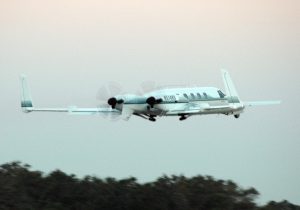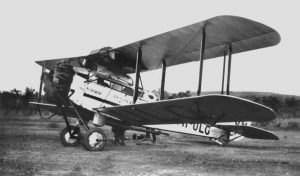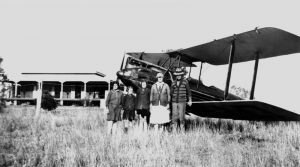Getting Your Pilot’s License: Everything You Need to Know
 When I was growing up, possibly the one piece of advice I got from an elder loved one was simply, “Always understand what you are getting into.” When it comes to obtaining your pilot’s license and turning into one of those chosen individuals who is permitted to take airplane off the face of planet earth, you should be well prepared to get through exactly what is a pretty tough training period.
When I was growing up, possibly the one piece of advice I got from an elder loved one was simply, “Always understand what you are getting into.” When it comes to obtaining your pilot’s license and turning into one of those chosen individuals who is permitted to take airplane off the face of planet earth, you should be well prepared to get through exactly what is a pretty tough training period.
They state that anything worth having is worth waiting on. Obtaining your pilot’s certificate is most definitely worth waiting for. Not only must you enter into it with a good supply of decision and persistence, you ought to enter it working as hard as you can. Then, not only do you come away with the certificate, you come way fully equipped for anything when you get in the pilot’s seat of an aircraft.
There are a few things to take into consideration, such as:
1) Lots of study: You will certainly have to understand your aircraft in and out. Do not choose anything much less.
2) Making a financial investment: Quality flight training is not something you ought to reduce prices on. Be prepared to pay for the most effective training you could obtain. It will certainly repay many times over when you are absolutely positive in your training.
3) Staying with it: It will certainly be up to you to organizing lessons together so you progress through the training till you have that very first test flight. Don’t let grass grow under your feet in between classes. Make obtaining your pilot’s certificate a high priority in your life and you will certainly get to your objective before you know it.
4) Test trips: You will not be flying an airplane in the very first week of course. You are going to have to discover a lot prior to the trainer letting you have the controls. But, be ready to demonstrate your knowledge and aircraft knowledge so when they do pass on the helms to you, you’re ready to roll and rock.
You are getting in a totally brand-new world and a brand-new ability where you have to have a mix of high level of understanding, as well as a lot of experience in being able to handle different situations you will certainly encounter in the air. The first degree of competency is your knowledge of the airplane you are about to fly.
While you are not going to end up being an airplane mechanic, there ought to be nothing strange about your plane. Study the technicians, the layout, and the procedures of the airplane until you eat, drink and also sleep aircrafts. That expertise will be a lifeline for you when you are the captain of your own aircraft. Do your research up front regarding not just the track record of the college you choose to educate you to fly a plane, but also the background of the instructors.
The History of Aircraft (Part 2)
In 1964, the Piper Navaho came into the aviation industry. It was available in three variations that provided for different demands in sitting ability and setups, equipped with user-friendly features, and had the ability to carry luggage. The same year saw the introduction of Beech’s Version 90 King Air, one more twin-engine airplane that might shuttle more than five passengers in comfort. As proven by its over 80% share of the industry within its market, the King Air promptly came to be an essential for air travel.
 Beech continued to innovate and produced the Beech Design 2000 Starship (1983). The brainchild of aircraft designer B. Rutan, this was a declaration of a cutting-edge aircraft with affordable rates. However, the Starship didn’t sell well. Expensive at over $4 million, there were around 52 Starships created.
Beech continued to innovate and produced the Beech Design 2000 Starship (1983). The brainchild of aircraft designer B. Rutan, this was a declaration of a cutting-edge aircraft with affordable rates. However, the Starship didn’t sell well. Expensive at over $4 million, there were around 52 Starships created.
At the same time, the Gulfstream III, as well as the Learjet 55 and 60, served the aircraft industry well for many years from 1979 to 1990. The catch was it had a lower drag that conserved fuel. This encouraged intercontinental flying and this line of aircraft continues to see enhancements today.
Around 1985, the Gulfstream IV was put into the sector and promptly created an uproar. Transporting over 18 travelers in luxurious interior features, it was constructed with wealthy individuals in mind. The industry realized that those with money expected more out of an aircraft than just the basics.
The Gulfstream IV was a result of the personal demands of the wealthy. Developed at a cost of $24 million, affordable cross country trips were possible, with lengthier fuel usage and fewer moving wing parts. To contribute to its tale, Gulfstream chairman Allen Paulson developed many flight documents while flying throughout the world. He recorded such historical feats like being 8.5 hours faster than the Boeing 747SP for a trip worldwide in the winter of 88 that was under 40 hours.
The History and Evolution of Aircraft: A Complete Timeline
 When you recognize that there are only 500 airfields in North America offering passenger service, it is no surprise that individual and corporate flights have ended up being a market in itself. Whether it is the Lear jet of a delivery tycoon, media mogul with a partially Cessna Citation X, or the difficult speaking political leader in his Douglas DC-4, aircrafts promote comfort and efficient traveling to take part in and fulfill essential company or individual consultations.
When you recognize that there are only 500 airfields in North America offering passenger service, it is no surprise that individual and corporate flights have ended up being a market in itself. Whether it is the Lear jet of a delivery tycoon, media mogul with a partially Cessna Citation X, or the difficult speaking political leader in his Douglas DC-4, aircrafts promote comfort and efficient traveling to take part in and fulfill essential company or individual consultations.
Aircrafts come in all versions, from the single-engine Cessna and Pipers, to twin light airplanes and Lear jets. Post-war advancement has actually geared up aircrafts with the essential communication abilities to make round-the-clock, all season company flying a fact.
Flying initially started in the late 1920. Open-cockpit biplanes, like Stinson, Fairchild and other enclosed cabin layouts were used, yet it was the distinct Beech airplanes that came to be early pacesetters on effective traveling. The Beech Model 17 (1932) was an image of high-end and convenience with high-quality cabins that could seat five passengers. Its cousin, the Model 18 Twin Beech was developed for the objective of economy flying and could seat as much as nine guests. Its appeal was established with a production line that lasted over 30 years, as well as over 6,000 units constructed.
 The Grunman-built Gulfstream company airplane line debuted in 1958 and was commonly recognized as the crème de la crème of flying, no question due partly to leveraging on its twin turbo prop engines. The one-million price of the Gulfstream did not deter buyers and progressively established itself in the air travel market, while an enhanced efficiency shipment featured the development of the Gulfstream II in 1964.
The Grunman-built Gulfstream company airplane line debuted in 1958 and was commonly recognized as the crème de la crème of flying, no question due partly to leveraging on its twin turbo prop engines. The one-million price of the Gulfstream did not deter buyers and progressively established itself in the air travel market, while an enhanced efficiency shipment featured the development of the Gulfstream II in 1964.
As well as that could fail to remember the Learjet– Lear Sr.’s innovation that is now associated with all things flying, a symbol of glamorous company traveling. The Learjet 23 was the initial mass produced, constructed, and financed small aircraft. It was provided by the Chemical and Industrial Firm of Cincinnati, Ohio.
March 1966 saw the intro of the greater efficiency Learjet 24 which would be the very first business airplane to fly around the world within four days. Record breaking sales were developed with the manufacturing of the Learjet 35/36, which was an improved Learjet 25. The Learjet 36 saw a 1976 global a goodwill trip with a pilot who was no other than the late wonderful golfer Arnold Palmer.
